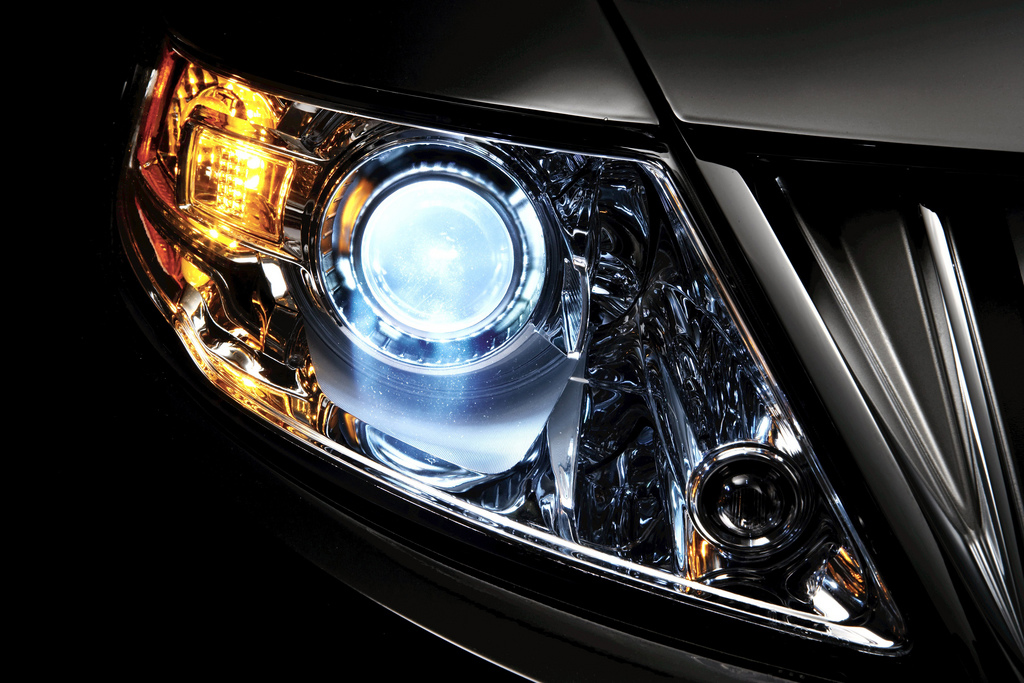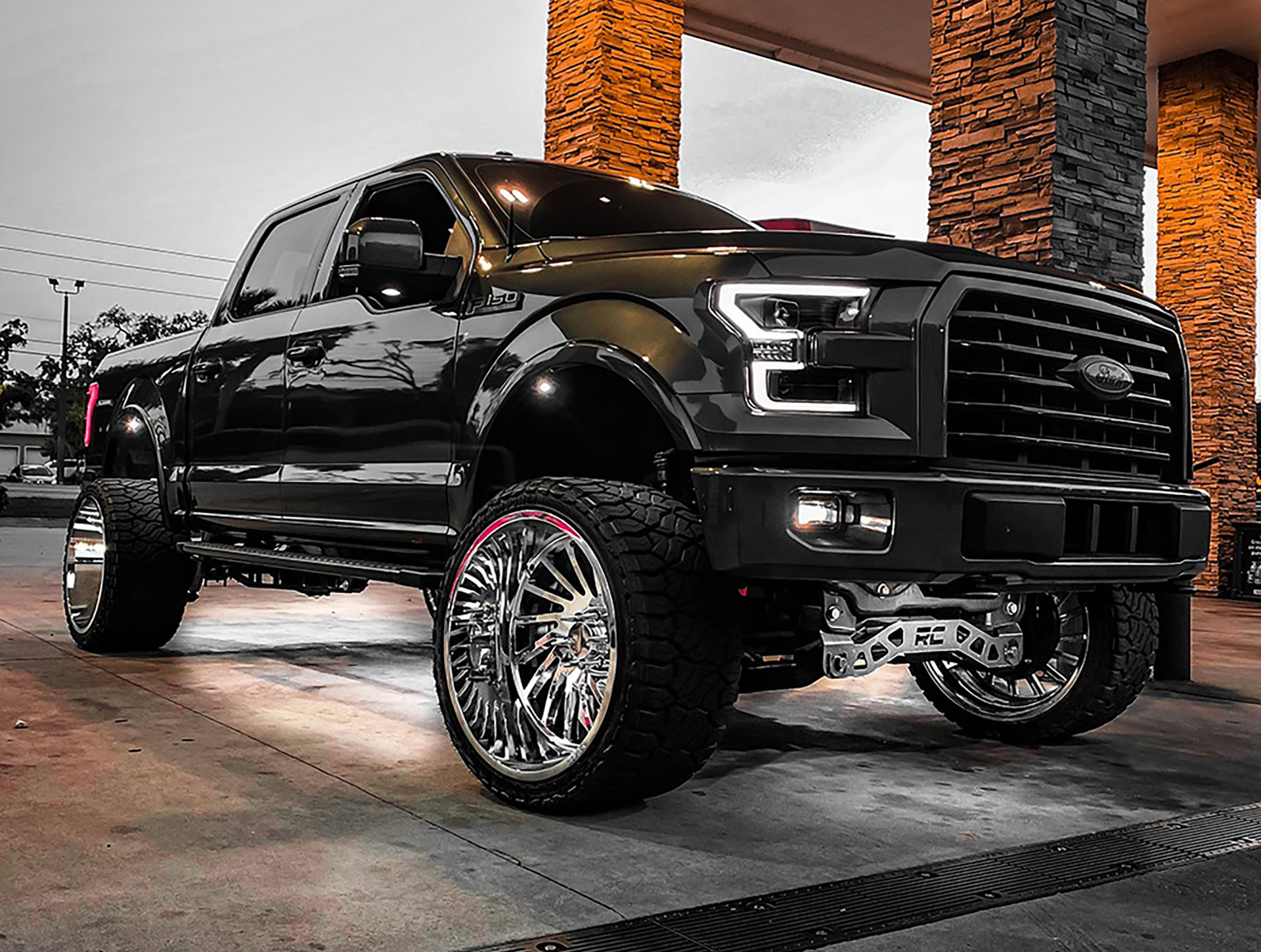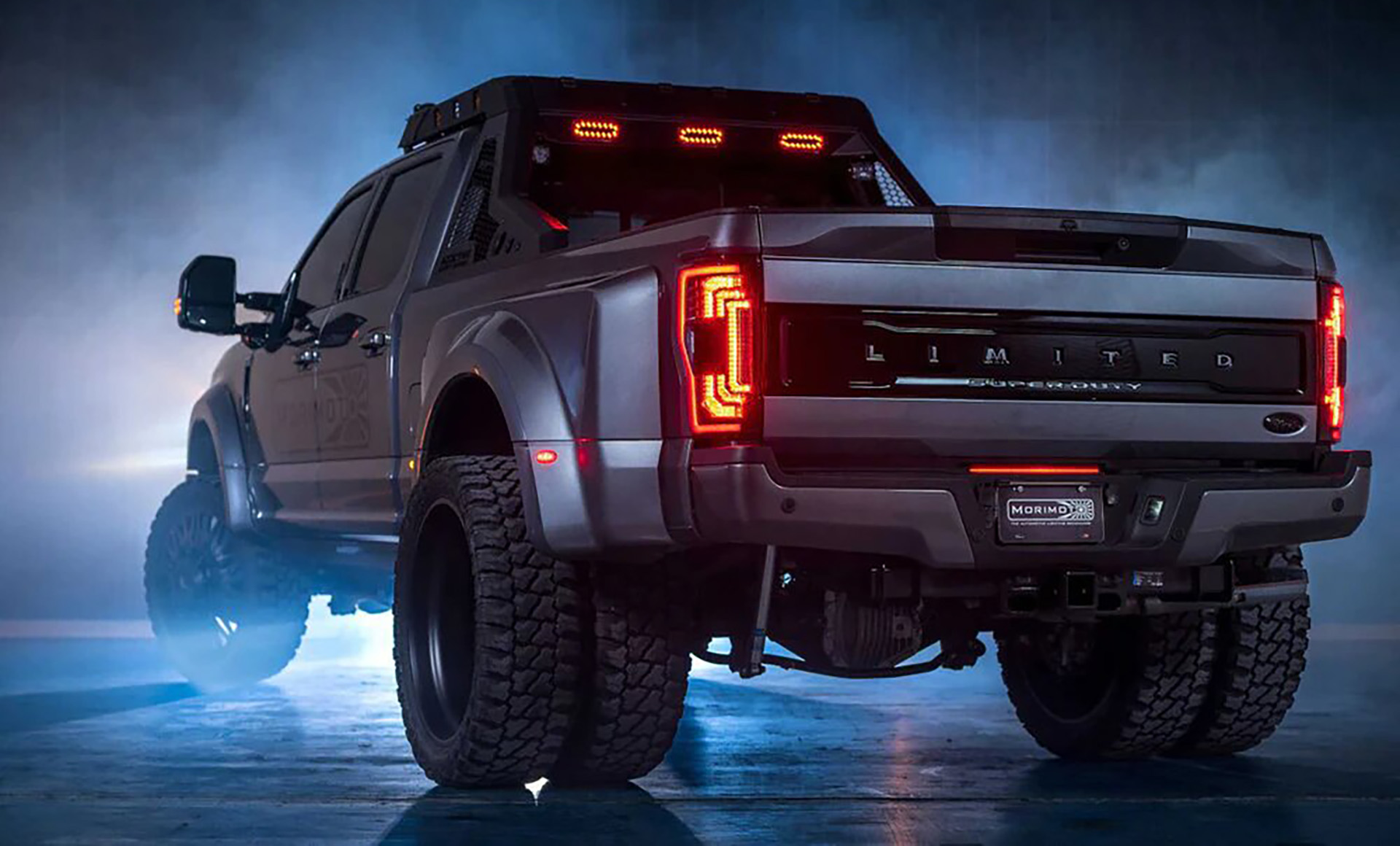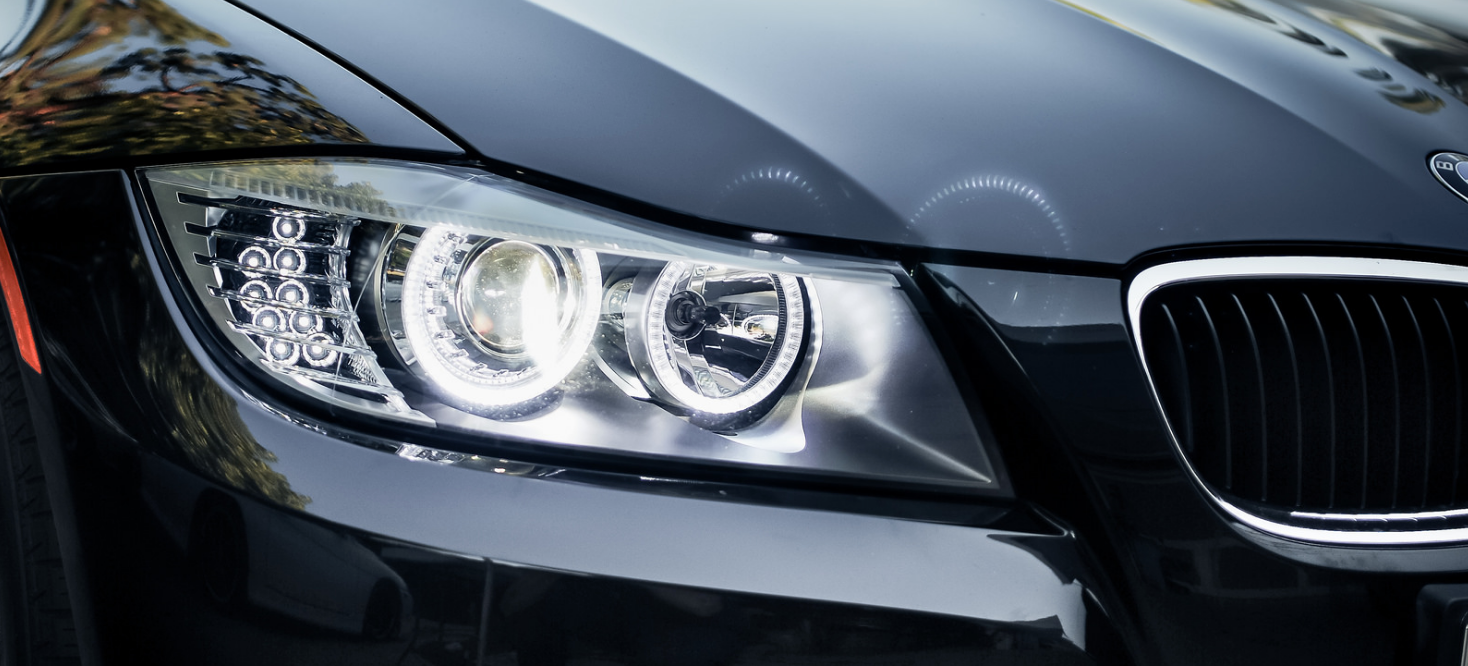To determine for yourself what is better – halogen or LED, there is only one way. It consists in a practical comparison. That is, you must first drive with halogen headlights, then, under the same conditions, with LED. The key point here is the same conditions, which are almost always neglected, and you end up with erroneous conclusions.
Which is better – halogen or LED?
The purpose of this article is to explain how to adequately compare and understand what is better – halogen or LED. A total of 14 criteria will be considered, according to which the two fundamentally different lighting technologies will be compared. Conclusions – everyone will make their own, because it is very important to form their own opinion.
What is a halogen?
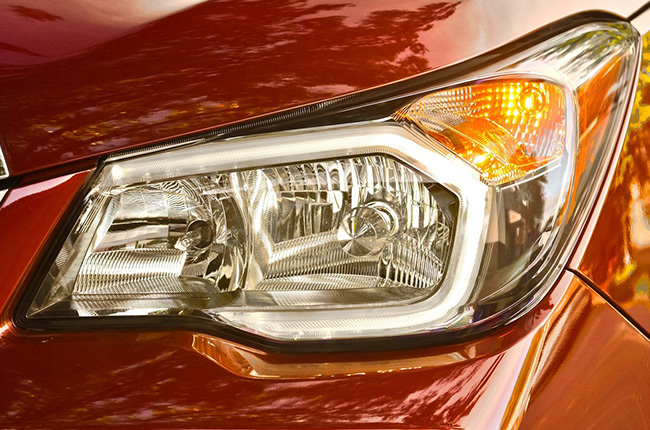
A halogen lamp is a source of light that is formed by heating the filament with an electric current. They differ from the classic incandescent lamp in that inside its glass bulb is pumped so-called buffer gas. These can be vapors of bromine, iodine and other substances that chemical science defines as halogens. Actually, this is where the name of this category of light bulbs came from.
In the automotive field, halogen bulbs for headlights are denoted by the Latin letter H. This is the first letter of the word halogen. Then comes the number, by which you can determine the shape, size and other parameters. This is important to remember, as many people refer to non-halogen bulbs as H4, H7 and so on. This is fundamentally wrong, because neither regular incandescent bulbs, nor xenon, much less LED are halogen light sources. Well, this is just for general information…
What is a LED?
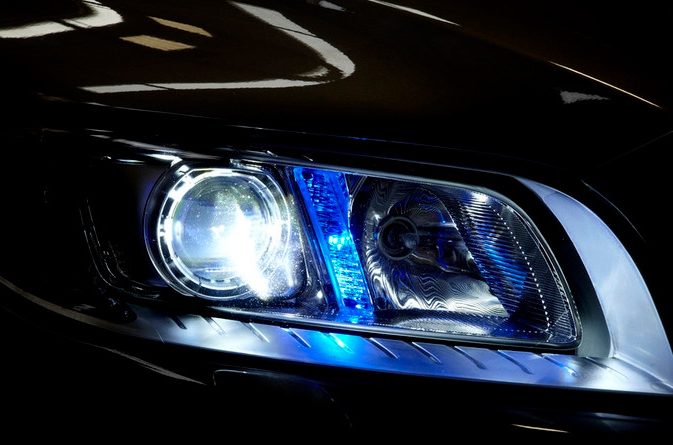
LED lamp – a light source, which is formed by the property of semiconductor to glow when passing through an electric current. In itself, this light is quite weak, so to increase the brightness of a special substance – phosphor. It fills the semiconductor, and we see it on the LED lamp in yellow.
LED lamps, designed for installation in car headlights, there are several important features that it is desirable to know. First, unlike incandescent filament, the LED element does not emit light in all directions, but in a fairly narrow sector. Secondly, it is a misconception that halogens are necessarily yellow light, and LEDs are white.
In fact, the color of the glow depends not on the technology, but on how the lamp itself is made. For example, to shift the color spectrum of a halogen lamp from yellow to white or bluish, it is enough to apply the appropriate color bulb, which will work as a filter for the light flux. Thanks to this you can get a halogen lamp that will not give yellow light, but close to white.
In the case of LEDs, the color of the light is fairly easily changed by selecting a phosphor. It is because of this there are both emitting white or cool LED light, and glowing with warm or yellowish hues. But we will come back to this.
Criteria for comparing halogen and LED lamps
And now let’s define the criteria that will help to adequately compare halogen and LED. In this case, since we are interested only in automotive headlight bulbs, not affecting the light of their headlights factors will not take into account and we will not discuss. Although they are, and they are quite a few. Touching the same directly to the headlights, the criteria, too, enough.
We will dwell on the following 14 criteria:
- Headlight compatibility.
- Brightness.
- Light and shade borders.
- Illumination of the wet road.
- Light efficiency when driving in fog.
- Effects of the light spectrum on the driver’s eyes.
- Blinding the oncoming traffic.
- Value for money versus quality.
- Durability.
- Demanding power supply.
- Dependence on temperature.
- Power consumption.
- Dependence of power on heat of the lamp.
- Vibration resistance.
Now let’s look at them in more detail, after which we won’t have to draw any conclusions. They will show up on their own.
Compatibility with headlights
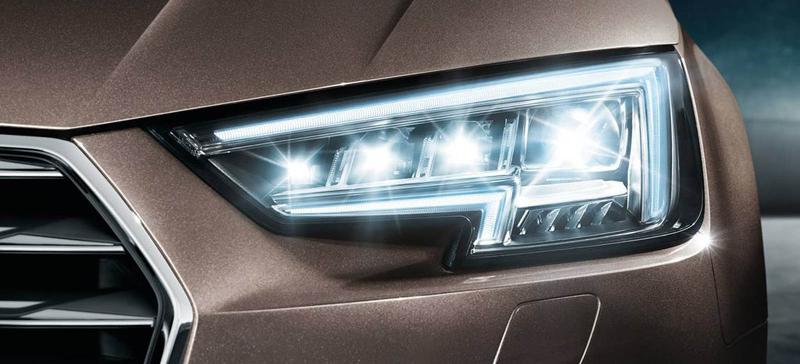
To break down this criterion, and to compare by it halogen with LED, you need at least in general terms to understand what a car headlight is, and on what principle it works. Since the most of the problems in choosing between halogen and LED is a dipped beam, it will be our focus.
There are far fewer requirements for the main beam of car headlights. In this case – the farther they shine, the better. Of course, there are other requirements. But the dipped beam is much more complex. It must illuminate the road so that we see as best as possible, but at the same time, do not blind the drivers of oncoming traffic.
To achieve from headlights exactly this work, the light flux emitted by them must have adjustable boundaries. That is, if the headlight will use the potential of the installed lamp to illuminate not only what you need, but also the surroundings – such light will never be effective. Moreover, it will blind drivers from oncoming traffic.
How do you set the limits for the light to work properly? This can actually be done in several ways. First, if the lamp installed in the headlight emits light in all directions, we can “trim” its boundaries with intricate grooving of the glass. Secondly, we can give the reflector a special shape, due to which the light from the lamp going to all sides will be focused on the road where we need, but not in the eyes of oncoming drivers.
Thirdly, if the lamp is designed in such a way, that it can not radiate light in all directions, we have to collect and focus this light with the help of a lens. And finally, fourth, we can use a small curtain in parallel with the lens, which will sort of cut the light beam so that it has a clear, and we need the boundaries.
From all of the above it should be clear as follows. If the headlamp head light was originally designed under the lamps, which, because of its characteristics emit omnidirectional light, the use of lamps in them aimed at one or two sides of the light – can not. This is exactly the light that the LED lamps give and that’s why after installing them in halogen headlights you can’t get properly focused light.
Hence the first obvious disadvantage of LED lamps – incompatibility with headlamps designed for incandescent bulbs (classic or halogen – it does not matter). By and large, at this point in the article on the halogen and LEDs could be finished, because most often it is this criterion is allowed to make a mistake motorists. But we will not stop here, and will go further.
Brightness
I’m sure many of you know that the LED bulbs shine brighter than halogen. This is shouted at us advertising. If correctly expressed, the LED a certain power gives brighter light than halogen of the same power. This point is important because many people go (or want to go) from halogen to LED lamps is the expectation of increasing the brightness of the headlights.

However, the brightness in the headlights is not the main indicator that affects the quality of road lighting. Much more important parameters is the light and shade borders and the color spectrum. But about this later.
At this point we mention the following important point. How, in the vast majority of cases, halogen lamps are compared with LEDs? That’s right. An inexpensive set of halogen lamps and three times the price of LEDs is purchased. It is quite natural that in this case, we get a brighter glow from the LEDs. Although blurred, uneven and with other defects.
If you buy LED lamps for $ 50, and compare them to halogen at the same price, then a big difference in brightness we will not see, because it will already be quite good quality halogen. Moreover, if we install quality halogen bulbs in headlights designed exactly for them, we will get not only decent brightness. We will also get a clear focus of the light beam where it is necessary and we will not be left without an upper light and shade border. On the other hand, if the headlights were originally designed for LEDs, then the LED will be beyond competition in brightness and other parameters.
And in the end, if we imagine that we are not doing anything stupid by combining the incompatible, then we have the first advantage of LED lamps – a little higher brightness compared to halogen lamps of the same power.
Light and shade boundary
If you’ve read the above carefully, this criterion should already be clear to you. Light and shade boundary, if anyone does not know, this line, which clearly separates what is lit headlights from what should not be lit. And we have already found out that as a result of the installation of LED bulbs in the headlights, designed for incandescent lamps, we will not get any clear light and shade boundary.
If the headlamp was originally designed taking into account the peculiarities of luminescence of LED lamps, we will naturally get a clear light and shade borders, and the normal focus and brightness. All this we get due to the fact that the light emitted by the LED light in such a headlamp will be properly collected, focused and “cut off”.
On the conventional headlamp with LED lamp we usually get a pathetic semblance of a kind of bright white light. But. There is no upper light and shade border. The so-called tick, by which the headlights are adjusted – there is no mention. Moreover, the light, which falls on the road surface is uneven, with shadows and light spots. And when we do not have a light and shade boundary, no tricks will ensure that the drivers of the oncoming traffic were not blinded by our headlights.
It is for this reason that literally every third car driving oncoming today dazzles. And you can not “flash” them with high beam (and it’s prohibited by traffic rules) in the hope that they finally switch from high to low. They will not. They are driving on low beam anyway. Just in their headlights, designed for incandescent, installed LEDs (well, improperly installed cheap xenon is a separate topic of conversation).
Wet road lighting
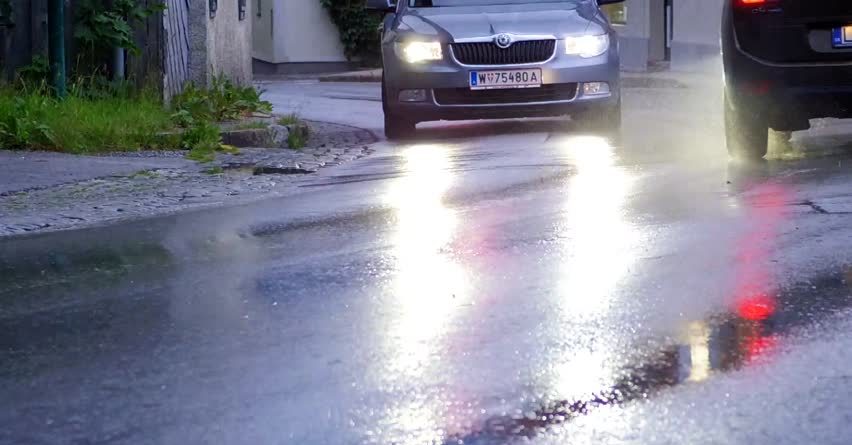
It is our nature that more yellow light is better reflected from the wet road surface than the white one. Hence the reasonable complaints of motorists that after installing LED lamps in conventional headlights in the rain is impossible to drive. And if you add to this the fact that LEDs “out of their plate” gives an uneven beam, here and there – forming shady spots, the quality of the headlight at all have to forget. The problem is exacerbated by the fact that the majority of LED headlight bulbs are purchased in the version that gives the whitest possible color. Although no one prevents to buy a luminous warm shade of LED.
With halogen bulbs can be almost the same problem if they are originally made to give a light that is close to white. That is, a so-called cold tint. In such cases, the light is also very ineffectively reflected from the wet asphalt, thereby sharply reducing the visibility for the driver. It is not common, as halogen lamps with cold light are usually more expensive and not many people buy them. Classic halogen lamps, shining in the so-called warm range of the spectrum, similar problems suffer much less.
Light efficiency when driving in fog
Here the trend is exactly the same as in the case of wet asphalt. Since, as mentioned above, LED lamps are purchased, as a rule, as “white” as possible, after their first use in foggy weather the driver’s eyes literally fall out. Naturally, it is not the LED technology itself that is to blame. “Blinds” the color tone of the light.

It is also worth remembering that in most cases LED lamps are installed in headlights not designed for them. And in this combination, as we have already found out, there is no clear light and shade boundary. The result is about the same effect as driving in a fog with high beam on. Anyone who’s tried it knows what it’s like.
With halogen bulbs, such problems are usually less. And, again, not because of the technology. The color temperature is simply in the more popular because of the attractive price of halogen bulbs – in the warm range of the spectrum. If you buy a lamp with a declared luminous temperature of about 5000 K – in a fog, too, there can be serious problems.
You can forget about this criterion altogether, if the car is equipped with the right fog lights. Moreover, they can be both with halogen lamps, as well as LEDs. But again, to put LED lights into fog lights which were originally designed for halogen means to remain completely without the benefits of normal fog lights.
Effects of the light spectrum on the driver’s eyes
White light is good, many will say. If it’s not raining or foggy outside, with this light you can see everything very well. Even too well. And if driving on a snowy white road – the feeling of night almost completely disappears.
However, we should not forget about how white or cold light affects a person’s vision. It quickly fatigues not only the eyes, but also the brain. Often there are problems such as eye-cramping, increased tearfulness, blurry vision, and so on. If you have such problems and shine cold headlights – these problems are precisely because of the hue of the light they emit.
As for the other extreme – the yellow light that most inexpensive halogen bulbs suffer from – it’s not very good either. The bad thing about too warm light is that it is poorly reflected from dark surfaces, such as the night road. However, human vision is not affected by yellow light as white. There is no fatigue, tears, and sand in his eyes.
Here it is important not to confuse concepts such as yellowish warm light, and dim light. The latter is bad for everything if you’re driving. It’s bad for your vision, it’s bad for your brain, it’s bad for your visibility.
The best light for humans, on the other hand, is the kind we can see during the day in good sunny weather. Why this is so should be quite clear. For many, many years, human vision has adapted to this particular shade of light, and therefore perceives it best. If anyone is wondering how much it is in concrete numbers, it’s about 4,200 K. It is this color temperature should be guided by, choosing lamps for headlights. And if they are halogen or LED – it is a matter of ten, because both are available with this temperature of luminescence.
Blinding the oncoming traffic
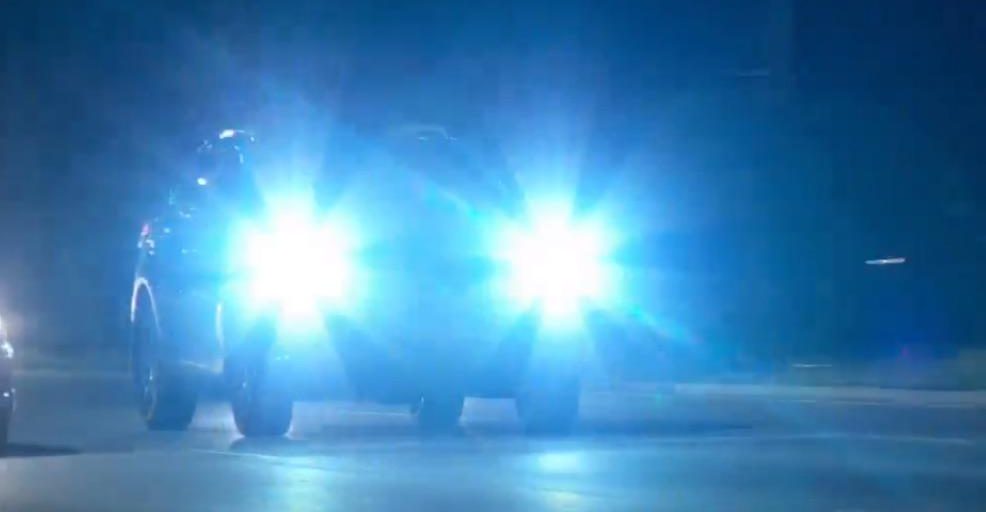
This has already been mentioned. But because it is extremely important to repeat and conditionally emphasize – if you install LED headlights in conventional headlights, moving you to the meeting will be dazzled. Such headlights are not designed for directional LED light. They can neither collect it properly, nor focus it, nor limit it. It is also unreal to adjust such light. Of course, you can adjust the headlights in the right direction. But you either will not get a normal spot of light in front of your car, or you will dazzle the oncoming traffic. You can’t get the third one, as there is neither focus, nor light-shade boundary.
You don’t have such problems with halogen bulbs if you regularly monitor the headlights settings and correct them if necessary. Here everything is in clear focus and there is a light and shade border to avoid dazzling of oncoming drivers.
Of course, this does not mean that LEDs are a must and inevitable blinding of oncoming traffic. No. If LEDs are installed in the headlights, which were originally designed with the way LED bulbs shine, no one will be blinded. Such headlamps “know how” to collect the light from the LED source, and focus it, and “cut off” so that there was a clear light and shadow boundary and the proverbial tick.
Cost to quality ratio
This is probably one of the most essential criteria for comparing halogen and LED lamps, which, unfortunately, is often misused. Usually car enthusiasts reason like this. Halogen bulbs are cheaper than LED ones. Accordingly the latter are simply obliged to shine better than the former. As a result they usually buy cheap or mid-priced LEDs, which lead to the disappointment and problems described in this material.
If the criterion of value for money and quality to use intelligently, then the reasoning is as follows. Inexpensive halogen bulbs cost x amount of money, and inexpensive LED bulbs cost 2x or even 3x money. That said, only the stupid and naive would expect anything good from inexpensive LEDs. Wouldn’t it be better to spend 3x the money to buy better quality halogen bulbs?
Practice shows that this is the best arrangement. Moreover it will be ideal if your car headlights are originally designed for incandescent bulbs and you don’t intend to change them. Buying halogen bulbs, which will cost about the same price as the Chinese LED disgusting quality, you will get excellent light. It will be quite bright, properly focused and with a clear light and shade boundary. In addition, if you choose the right bulbs for the color temperature, taking into account the above, in addition, you get optimal light for your vision and for driving in different weather conditions.
As for the LED lamps, no one is saying that they are originally all of poor quality. There are a lot of high-quality ones. That’s just they do not cost 2-3x money, but all 10-15x. Is it worth buying them if you are going to install them in regular headlights, from which the halogen bulbs were taken out? The answer should be obvious by now.
Longevity
If we focus on the declared service life of halogen and LED lamps by the manufacturers, we see a monstrous difference. Almost tenfold. What do we see in practice? Some people’s LED bulbs fail after just a few days. Who was more lucky, the first one burns out, on average, after a year of not very frequent use. It should be emphasized that we are talking about inexpensive or medium-priced LED lamps, which are often bought in the pursuit of a brighter and whiter light.
It’s possible that LEDs last longer for many. No one is arguing. But if you ask around real car owners and long enough to scan the thematic forums, you will often meet negative feedback about the durability of LED. So if one of the important criteria for you was the producers stated long lamp life, focusing on it makes no sense.
With halogen lamps, which are bought more often at low or medium prices, suffer from other problems. As a rule, they do not burn out for a very long time. But after a couple of years (and some models even earlier) they start to degrade, that is, shine dimmer and dimmer. Unfortunately, this state of affairs is inevitable. The filament burns out over time, becomes irregular in cross-section, is covered by fouling, and as a result emits less light.
On the market you can find a lot of halogen bulbs, the description of which says that they have an extended service life. Accordingly, such models cost much more than budget halogen, or even LED lamps. Is it worth counting on a longer life, paying a serious amount for a pair of these bulbs? It is definitely worth it. Despite the manufacturers’ pursuit of profit, the more expensive items are still, overwhelmingly, of higher quality. Somewhere the same gas is pumped better, somewhere in the production of filament did not spare the raw material, quality bulb and other – and more durable lamp is ready.
Demanding power supply
Despite the fact that long ago even the cheap LED lamps are equipped with built-in power stabilizer, many are still afraid of the “inherent weakness” of LEDs to voltage fluctuations. In its “bare” form LED really suffers from this drawback. And the reason is that the slightest increase in voltage leads to a pony increase in current, which passes through the LED. As a result, the crystal overheats and quickly degrades, and then burns out.
But today this problem is no longer relevant. LEDs of any price category come with built-in stabilizing circuits, which more or less keep the power parameters at the proper level. Of course, the quality of these stabilizers in certain lamps can still be argued. But the fact that they are there is already good.
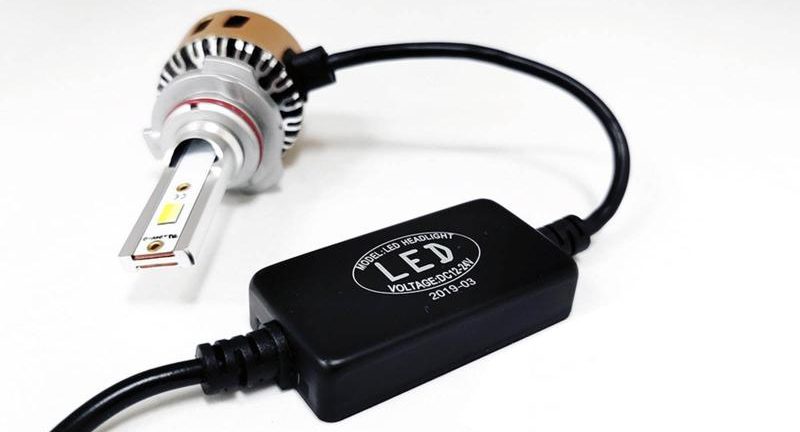
Halogen bulbs, on the other hand, are virtually immune to voltage fluctuations in the range in which they are present in the car. Of course, if the lamp is rated at 12-14 volts will be powered from 14.8-15.0 volts, it will burn out sooner than you’d like. But it will still work for a very long time, even if you bought it for cheap.
Temperature dependence and lamp power
Here, perhaps, we combine the two criteria into one, as they are very closely related to each other. The thing is that halogen lamps and high temperature – it’s compatible, but in the case of LED – no. LEDs really “do not like” overheating. They degrade and fail. In addition, when heated LED begins to operate with less power, respectively, it gives less light.
And here hides a rather serious disadvantage of LEDs, which many people do not take into account at all. To avoid overheating of the LED, car lamps are equipped with their own cooling system. This can be just an aluminum radiator, a radiator with a cooler, and even some strips of braided aluminum wire. In the end, it seems like it should work. But in headlights that are not originally designed for LED – it doesn’t work a damn thing. The crystal still overheats, degrades, and quickly fails.
Power consumption
LEDs have always had the advantage here. At the same power consumption LEDs are able to produce one and a half to three times more light than halogen. This reduces the load on the onboard network, including the generator, reduces voltage sags and so on. Many people even say that the engine consumes less fuel if the headlights are equipped with LED lamps (this is true, but the savings are so insignificant that we won’t even talk about it here).
Resistance to vibrations
Claims that LEDs are more resistant to vibration than halogen lamps – to put it mildly, not very honest. Yes, of course, the LED has no filament, which can be affected by serious vibrations. There is a crystal, tightly filled with phosphor. But do not forget that the car LED lamp is not only a crystal in a phosphor. It is also a power stabilization circuit, and cooling. All of this suffers and fails as much due to vibration as the filament of a halogen lamp.
